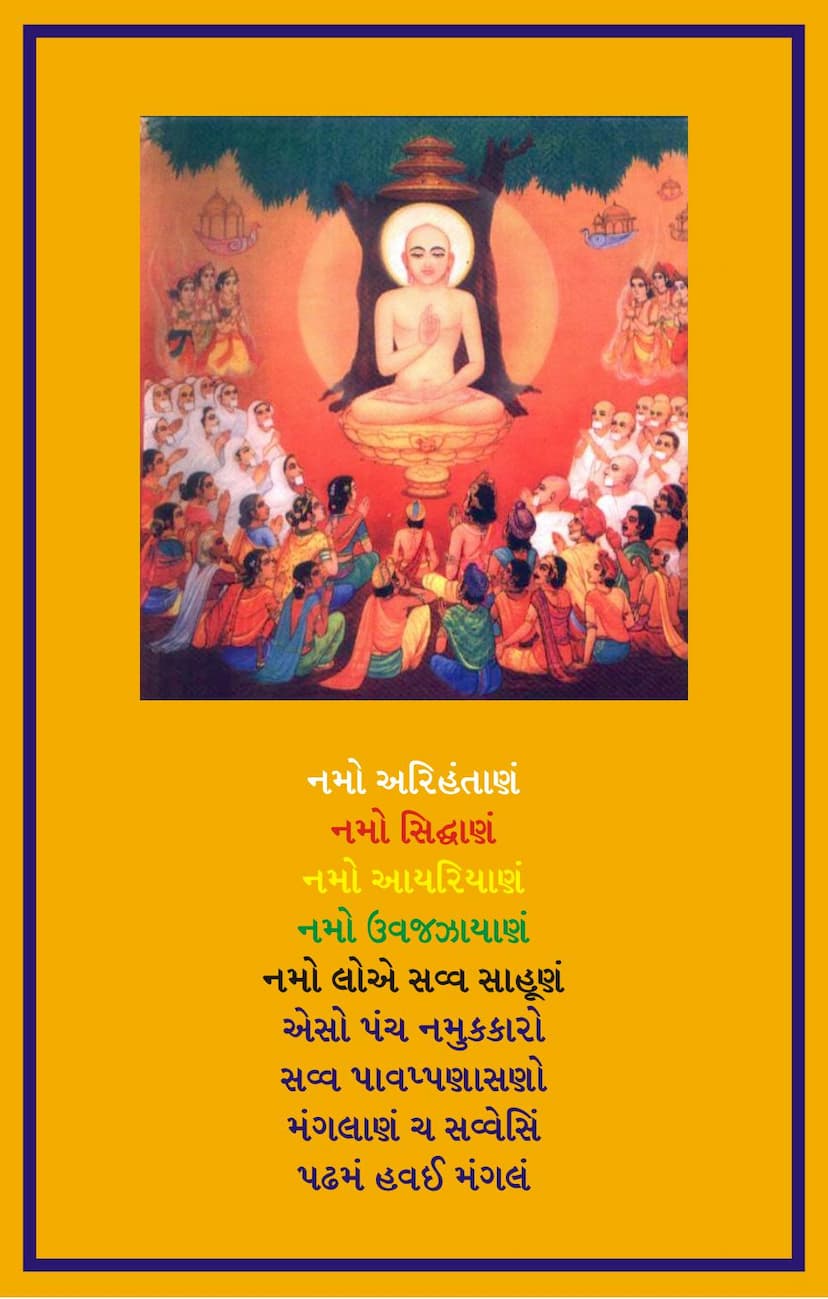Agam 18 Upang 07 Jambudveep Pragnapti Sutra Part 02 Sthanakvasi
Added to library: September 1, 2025

Summary
The provided text is the second part of the Jambudveep Prajnapti Sutra, a foundational Jain scripture, specifically focusing on the geography and cosmology of the Jambudvipa continent. This summary is based on the provided text, which details the seventh chapter (Upang 07) of Agam 18.
Book Title: Agam 18 Upang 07 Jambudveep Prajnapti Sutra Part 02 Author: Ghasilal Maharaj (with commentary by Prakashika) Publisher: A B Shwetambar Sthanakvasi Jain Shastroddhar Samiti Catalog Link: https://jainqq.org/explore/006355/1
Overall Summary:
This portion of the Jambudveep Prajnapti Sutra, as elaborated by Ghasilal Maharaj in his commentary, continues the detailed description of the Jambudvipa continent, a central element in Jain cosmology representing the middle world where humans reside. Building upon the previous part, this segment (Part 02) delves into specific geographical features, particularly mountains, rivers, and regions, meticulously detailing their dimensions, locations, and associated elements. The text focuses on the fourth Vaxashkara (section), which describes the Kshudr Himavat mountain, and subsequent sections detailing the Pashcha Himavat mountain, rivers like Ganga and Sindhu, the Jambudveep mountain, and further geographical divisions like Harshavardhana, Nilavanta, Mahavanta, and the vast Mahavideha region. It also meticulously outlines the rules for Aswadhyaya (times when scriptures should not be studied), a crucial aspect of Jain practice emphasizing purity and respect for certain celestial and worldly phenomena.
Key Themes and Content:
-
Geographical Descriptions: The text provides extremely precise and detailed measurements for various geographical features, including:
- Mountains (Vardhara Mountains): Detailed descriptions of mountains like Kshudr Himavat, Himavat, Mahavanta, Harshavardhana, Nilavanta, and finally Mahavanta (though the initial part seems to focus on the Himavat range and its variations). These descriptions include their height, width, length, and the specific locations of their various parts like peaks and bases.
- Rivers: The text meticulously describes the origin, course, and eventual destination of major rivers like Ganga and Sindhu, including their dimensions and the celestial phenomena associated with their flow.
- Regions (Kshetras): The division of Jambudvipa into distinct regions such as Bharata, Airavata, and the expansive Mahavideha, with descriptions of their characteristics.
- Specific Landmarks: Details about lakes (like Padmahrada), forests (like Vanashanda), and precious elements within these regions.
-
Cosmological and Astronomical References: The text frequently mentions celestial beings (Devas and Devis), their palaces (Bhavanas), and the times and conditions under which religious texts should or should not be recited. This highlights the integration of spiritual practices with the understanding of the cosmos.
-
Aswadhyaya Rules: A significant portion of the text is dedicated to explaining the thirty-two specific circumstances that constitute "Aswadhyaya." These are times and events when the study of scriptures is prohibited due to reasons of impurity, inauspiciousness, or to maintain reverence. These include:
- Celestial Phenomena: Meteor showers (Ulkapata), unusual atmospheric colors (Digdaha), thunderstorms (Garjarava), celestial sounds (Nirghata), lightning (Vidyut), specific lunar phases combined with twilight (Yupaka), celestial lights (Yakshadipta), and dense fog (Dhumika Krishna/Mahika Shweta).
- Events Related to the Physical Body (Audarik Sharir): Instances involving decomposition or remnants of bodies (flesh, blood, bones), excretions (Mal-Mutra), cremation grounds (Smashan), eclipses (Chandra-Suryagrahan), political unrest (Rajavyagra), deaths of prominent figures (Patan), and the presence of a dead body within or near a sacred space (Audarik Sharir).
- Observances: Restrictions during specific festivals (Mahotsava) and the days immediately following them (Pratipada).
- Temporal Restrictions: Prohibitions during specific times of the day like dawn, dusk, noon, and midnight, and specific periods before and after sunrise/sunset.
-
Commentary (Prakashika): The text includes a detailed commentary by Ghasilal Maharaj, referred to as "Prakashika," which elaborates on the original sutras, providing explanations, interpretations, and sometimes additional context or references to other Jain scriptures. This commentary is crucial for understanding the nuances of the original text.
-
Sthanakvasi Context: The mention of "Sthanakvasi" in the title indicates that this particular edition and interpretation aligns with the Sthanakvasi sect of Jainism, which emphasizes ascetic practices and adherence to the Agamas.
In essence, this part of the Jambudveep Prajnapti Sutra serves as a detailed manual for understanding the physical layout of a significant part of the Jain cosmos, interweaving it with essential rules of conduct and spiritual discipline required for scriptural study. The meticulousness of the geographical details, juxtaposed with the specific regulations for scripture study, reflects the Jain emphasis on both knowledge of the universe and the ethical practices necessary for spiritual progress.